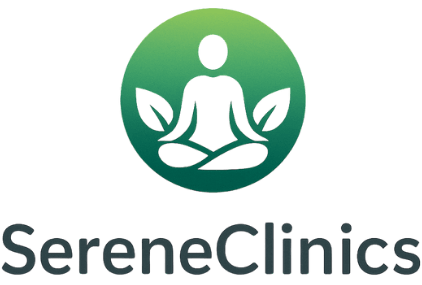Homeopathy: Principles, Practices, and Evidence-Based Integration
Homeopathy is a distinctive type of medicine that focuses on overall well-being, highlighting personal care and using natural treatments.
This article looks at the basic ideas behind homeopathy, including the Law of Similars and the Law of Infinitesimals, and examines the different practices involved, from consultation to remedy selection.
We examine the different types of homeopathy, review the evidence supporting its use, and discuss how it integrates with conventional medicine to enhance patient care.
Learn how homeopathy might work alongside your health journey.
Key Takeaways:
Contents
- 1 What is Homeopathy?
- 2 What are the Principles of Homeopathy?
- 3 How is Homeopathy Practiced?
- 4 What are the Different Types of Homeopathy?
- 5 What is the Evidence for Homeopathy?
- 6 Homeopathy Evidence and Usage Statistics
- 7 How is Homeopathy Integrated into Conventional Medicine?
- 8 Frequently Asked Questions
- 8.1 What is homeopathy and its basic principles?
- 8.2 How does homeopathy differ from conventional medicine?
- 8.3 What are the practices involved in homeopathy treatment?
- 8.4 Is there any evidence to support the effectiveness of homeopathy?
- 8.5 Can homeopathy be integrated with conventional medicine?
- 8.6 Are there any risks or precautions associated with homeopathy?
What is Homeopathy?

Homeopathy is a type of alternative medicine created by Dr. Samuel Christian Hahnemann in the late 1700s. It involves using very small amounts of natural substances that could cause symptoms in healthy people, with the goal of encouraging the body’s natural healing abilities.
According to Britannica, the World Health Organization acknowledges homeopathy as a legitimate healthcare approach, often used for long-term illnesses, mental health issues, and overall health.
What are the Principles of Homeopathy?
Homeopathy relies on several fundamental ideas that guide how it is used. These include the Law of Similars, Law of Infinitesimals, and the Law of Individualization.
These ideas emphasize homeopathy’s unique approach to patient treatment, focusing on individual care. It involves using remedies that reflect the patient’s symptoms to encourage natural healing and symptom relief.
While homeopathy advocates stress its personalized method, a systematic review published in ScienceDirect presents various criticisms that challenge its efficacy, showcasing contrasting perspectives on its principles.
1. The Law of Similars
The Law of Similars is a core principle of homeopathy that suggests that a substance causing symptoms in a healthy person can be used to treat similar symptoms in a sick person, epitomizing the concept of therapeutic similitude.
Historically, this principle can be traced back to the works of Hippocrates, who noted that illnesses could be alleviated by substances that induced similar symptoms.
In the late 18th century, Samuel Hahnemann, who started homeopathy, expanded on this concept and created a system for homeopathic treatments based on this principle. For example, if someone has a fever and is restless, homeopaths might recommend belladonna, which in larger doses could trigger those same symptoms.
This idea focuses on treating symptoms and the whole person, implying that when similar symptoms are treated, patients often see big improvements in their overall health.
2. The Law of Infinitesimals
The Law of Infinitesimals posits that the more a substance is diluted, the more potent its therapeutic effect becomes, which is a fundamental aspect of creating homeopathic remedies.
This principle challenges conventional notions of pharmacology, emphasizing the idea that even minimal traces of a substance can hold significant healing properties.
In homeopathy, treatments are created by continuously diluting and shaking substances to increase their healing power.
This law has significant effects, as it serves as the foundation for many recent studies that closely examine how well these diluted solutions work.
Researchers are constantly studying how these treatments work with the body’s essential energy, looking into the energetic characteristics that might explain their benefits for a range of health issues, from long-term diseases to sudden sicknesses.
Knowing this law improves discussions about alternative medicine and opens up more research into how homeopathy works.
3. The Law of Individualization
The Law of Individualization highlights the need to customize homeopathic treatments based on the specific symptoms and situations of each patient, which makes evaluating patients and analyzing symptoms important parts of homeopathic practice.
With a focus on the patient, practitioners thoroughly examine the person’s medical history, feelings, and lifestyle, helping them fully understand the patient’s health.
This care approach deals with physical symptoms and takes into account the mental and emotional aspects that affect health.
By carefully collecting details and paying close attention to patients, homeopaths can find trends that suggest suitable treatments.
This custom approach makes sure that each patient gets care that fits their individual needs, improving how well treatments work and building confidence in their recovery process.
How is Homeopathy Practiced?
Homeopathy works by following a specific method that usually includes a detailed consultation to gather patient information, choosing the right homeopathic remedies, and giving them correctly to achieve the best results for patients.
This focus on the patient is key in personalizing treatments to meet individual needs and improving the healing process.
1. Consultation and Case-taking
Consultation and gathering information are important in homeopathy, helping practitioners collect detailed facts about the patient’s health history, symptoms, and overall condition.
This conversation aids in creating treatment plans that meet the patient’s specific needs.
During this important stage, professionals look into different parts of the patient’s life, such as emotions, daily routines, and family medical background, offering a complete view that goes beyond just the symptoms.
Careful examination of the patient determines the remedy and builds trust between the healthcare provider and the patient, improving the success of homeopathic treatments.
Focus on the patient to make consultations effective, so care fits each person’s needs.
2. Selection of Remedy
The selection of the appropriate homeopathic remedy is a critical step that involves matching the patient’s specific symptoms with the therapeutic efficacy of various homeopathic agents.
This process needs a detailed knowledge of each remedy’s features, including its natural traits and how it is used. Practitioners usually analyze cases in detail, looking at both physical and emotional symptoms of the person.
They also take into account factors such as the duration and intensity of symptoms, as well as any prior responses to treatments. Personalized care matters because patients can respond to treatments in different ways, even when their symptoms are similar.
By carefully considering these factors, a practitioner can increase the chance of achieving the best treatment result suited to the specific constitution and health history of the patient.
3. Administration of Remedy

The chosen homeopathic treatment is given cautiously in terms of how much and how often, with the goal to support natural healing and improve the patient’s life.
For the best outcomes, practitioners should use a custom approach considering each patient’s specific symptoms and health condition.
The practitioner typically recommends specific dosages, often starting with lower doses to assess the body’s response, gradually adjusting as needed.
Watching is an important part of this process; it lets the practitioner see any changes in the patient’s condition and change the treatment plan as needed.
This custom plan adjusts how often and how much medication is taken to help the body heal by itself and improve health noticeably.
What are the Different Types of Homeopathy?
Homeopathy has different treatment methods: classical homeopathy, combination homeopathy, and complex homeopathy.
Each type has its own methods and advantages for patient care.
1. Classical Homeopathy
Classical homeopathy involves choosing one treatment that matches all the symptoms, following the traditional complete method.
This method stresses the importance of looking at the patient completely, not just concentrating on separate symptoms or illnesses.
Health professionals look at the emotional, mental, and physical aspects of a person’s health, realizing that each person deals with sickness differently. Classical homeopathy focuses on individual characteristics and how they work together to create a treatment plan suited to the person.
This careful practice treats health issues and also supports general health, helping the body’s natural ability to heal and find balance.
2. Combination Homeopathy
Combination homeopathy means using several treatments at the same time to tackle more symptoms and improve overall comfort.
This method is quite different from traditional homeopathy, which usually gives one remedy focused on the main symptoms of the person.
Combination homeopathy uses multiple treatments together to handle complicated cases better, especially when people have symptoms that happen together or are linked.
People believe this method improves outcomes and quickens healing.
For example, patients dealing with long-term issues like asthma or anxiety might experience better relief when treatments work together to bring balance. This approach can be helpful for those who feel ignored by standard treatments.
3. Complex Homeopathy
Complex homeopathy involves using different homeopathic treatments that are suited to the patient’s specific health issues, especially useful for long-term conditions.
This new method understands that long-lasting illnesses often arise from a mix of physical, emotional, and environmental causes, requiring a broader approach to treatment.
By applying different specially designed treatments, practitioners focus on addressing multiple symptoms at the same time, promoting overall well-being instead of simply addressing individual issues.
This method helps the body heal itself, improving health and strength.
Homeopathy can be adjusted as practitioners assess the patient’s needs, making it an adaptable treatment option for long-term health problems.
What is the Evidence for Homeopathy?
Research on homeopathy includes different types of studies like clinical research, reviews, and studies on its effectiveness, which evaluate how well it works and how it fits into current healthcare systems.
Homeopathy Evidence and Usage Statistics
Homeopathy Evidence and Usage Statistics
Homeopathy Usage and Evidence: Prevalence and Usage
Homeopathy Usage and Evidence: Geographical Prevalence

Homeopathy Usage and Evidence: Evidence and Regulation
The Homeopathy Evidence and Usage Statistics provides information on how common and accepted homeopathy is, showing how it is used among different groups and in various places, and discusses the criticism it receives concerning scientific proof and government evaluations.
Homeopathy Usage and Evidence indicates that in 2012, approximately 5 million adults and 1 million children in certain regions used homeopathy. The data suggests a modest uptake in alternative medicine, with 0.2% of children visiting homeopathic practitioners. These numbers show a specific interest in healthcare models where whole-person approaches are preferred by a small group.
- Geographical Prevalence: Use of homeopathy shows notable geographic variations, being more prevalent in countries like France, Germany, Austria, and Switzerland, where it reaches a 10% prevalence rate. This contrasts sharply with the 1% prevalence in Nordic countries, underscoring cultural and regulatory differences in the acceptance and integration of homeopathy into healthcare systems.
Evidence and Regulation reveal the scrutiny homeopathy faces. The NHMRC reviewed 57 thorough examinations and 176 specific analyses indicates a thorough review process to see how well homeopathic treatments work and if they are safe. This level of detailed scrutiny reflects ongoing debates about the scientific validity of homeopathy, impacting its regulatory status and public perception.
The data shows a complicated situation where homeopathy has a special role in health practices, shaped by cultural choices and government rules. While usage rates are significant in some regions, its overall acceptance is tempered by scientific critiques and varying regional attitudes, illustrating the ongoing tension between traditional practices and evidence-based medicine.
1. Clinical Studies
Clinical studies on homeopathy assess the effectiveness of homeopathic treatments by using thorough methods and examining patient results.
These investigations often compare homeopathic remedies to placebo controls and conventional treatments, shedding light on the potential benefits and limitations of such alternative therapies.
By using different statistical methods, researchers evaluate the results of treatments, along with how patients react and their personal differences.
Important studies, including those evaluating how well homeopathy works for health issues like allergic rhinitis and osteoarthritis, have generated a lot of conversation among doctors. These discussions help continue research in the field of alternative medicine.
2. Laboratory Studies
Research in labs on homeopathy seeks to understand how homeopathic treatments function and affect the body.
These studies are important to see how these treatments work with biological systems at a molecular level.
Recent findings suggest that homeopathic substances, despite being highly diluted, may exert measurable effects on various physiological processes. This raises questions about how these treatments might work by affecting cell communication, the immune system, and how genes are expressed.
Researchers are using advanced methods like high-resolution mass spectrometry and molecular modeling to better understand how homeopathic remedies work with biological targets. The implications of these studies could substantiate the efficacy of homeopathy, bridging the gap between traditional practices and contemporary scientific validation, as suggested by recent research on ResearchGate.
3. Case Reports
Case reports in homeopathy provide anecdotal evidence of treatment outcomes, showcasing the experiences of individuals who have benefited from homeopathic remedies.
These reports connect theory and practice, helping professionals assess how certain treatments affect different health issues.
An example is a case report that shows how individual homeopathic treatments helped cure long-term migraine headaches. This adds to knowledge about migraine treatment and encourages practitioners to think about using these methods in their practice.
The case reports show that homeopathy can be effective and highlight the need for personalized treatment plans. This helps both doctors and patients understand how homeopathic treatments can be used.
How is Homeopathy Integrated into Conventional Medicine?
Homeopathy is used alongside regular medicine mainly in integrative medicine, where different treatments are combined to improve results for long-term illnesses and make patients’ lives better.
1. Combination Therapy
Combination therapy in homeopathy involves the concurrent use of homeopathic and conventional treatments, aiming to maximize therapeutic efficacy and address complex health issues.
This new method lets doctors adjust treatment plans to fit each patient’s needs and combines the best from each field to address different symptoms more successfully.
Using a complete approach in healthcare, combination therapy can make patients feel better and encourages them to follow treatment plans.
In real-world applications, individuals experiencing chronic conditions such as arthritis or asthma may find that this synergistic method leads to improved outcomes, reducing reliance on pharmaceuticals while promoting a more natural healing process.
Using combination therapy has several benefits, offering a hopeful method to improve health outcomes.
2. Homeopathy for Side Effects of Conventional Treatment
Homeopathy is often employed to alleviate the side effects of conventional treatments, particularly in cancer therapy and chronic diseases, providing patients with a complementary approach to managing their symptoms.
By integrating homeopathic remedies into their care plans, many individuals have reported a notable reduction in nausea, fatigue, and emotional disturbances that frequently accompany aggressive medical interventions.
Examples show that certain homeopathic formulas can lessen the negative effects of chemotherapy, helping patients have a better life while undergoing treatment.
Stories from patients show that using homeopathy helps with physical pain and improves emotional health, building strength during hard times.
These experiences show how homeopathy can be an important additional therapy, improving the overall treatment and encouraging complete healing.
3. Homeopathy for Chronic Conditions

Homeopathy is often used to handle long-term conditions like pain control, diabetes, and different mental health problems, providing a complete method to caring for patients.
This alternative treatment method helps relieve symptoms and addresses the root causes of illnesses.
For instance, patients suffering from chronic pain have reported experiencing significant relief through individualized homeopathic remedies, which identify their unique symptom patterns. Similarly, individuals with diabetes have found that homeopathy can complement conventional treatments, leading to improved glycemic control and reduced side effects.
Testimonials describe how one patient reduced her anxiety medication by using a customized homeopathic treatment plan, highlighting the strong effects of this method. Homeopathy looks at both physical and emotional health, offering an approach that appeals to many people who want long-term solutions.
4. Homeopathy for Acute Conditions
Homeopathy can also be beneficial in treating acute conditions, providing rapid symptom relief and serving as a complementary medicine approach to traditional treatments.
By utilizing this system of natural remedies, individuals may find that ailments such as colds, allergies, and even minor injuries respond well to homeopathic interventions.
For instance, the remedy Arnica montana is frequently recommended for bruises or muscle soreness, aiding in faster recovery. Remedies such as Aconitum napellus can be useful for sudden high fever or anxiety.
This method helps ease discomfort and makes medical treatment better by focusing on both physical symptoms and emotional well-being, leading to a more balanced recovery.
Frequently Asked Questions
What is homeopathy and its basic principles?
Homeopathy is a form of alternative medicine based on the principle of “like cures like”, which means a substance that causes symptoms in a healthy person can cure similar symptoms in a sick person. It includes personalized treatment, using the smallest possible dose, and the process of dilution and shaking to increase the strength of medicines.
How does homeopathy differ from conventional medicine?
Unlike conventional medicine, homeopathy treats the whole person, not just the disease or symptoms. It also focuses on stimulating the body’s innate healing abilities rather than suppressing symptoms. Homeopathy also uses natural substances and does not have any known side effects.
What are the practices involved in homeopathy treatment?
A homeopathic practitioner will have a detailed conversation and consider the patient’s physical, emotional, and mental condition before suggesting a treatment. These remedies can be in the form of pellets, liquids, or topical applications. The practitioner may also recommend lifestyle changes and dietary modifications to support the treatment.
Is there any evidence to support the effectiveness of homeopathy?
While there is a lack of scientific evidence to support homeopathy, many patients report positive outcomes from treatment. Some studies have shown that homeopathy may be effective in treating certain conditions, but more research is needed. It is also important to note that homeopathy should not replace conventional medical treatment for serious or life-threatening conditions.
Can homeopathy be integrated with conventional medicine?
Yes, homeopathy can be integrated with conventional medicine. In fact, many patients use homeopathy as a complementary treatment to conventional medicine. Tell your doctor about any homeopathic treatments you are using to prevent possible interactions with your medication.
Are there any risks or precautions associated with homeopathy?
Homeopathy is generally considered safe, as the remedies are highly diluted and have no known side effects. However, some people might find their symptoms getting worse or have slight reactions to the treatments. You should talk to a qualified homeopathic practitioner about your medical conditions and medications before beginning homeopathic treatment.

Sheetal Sharda has a background in CS. She got an interest in Holistic living back in 2018, and has since started exploring more into Naturapathy, Holistic Living, Yoga, and more. She got inspired to start SereneClinics to help people find reliable centers across the world.





